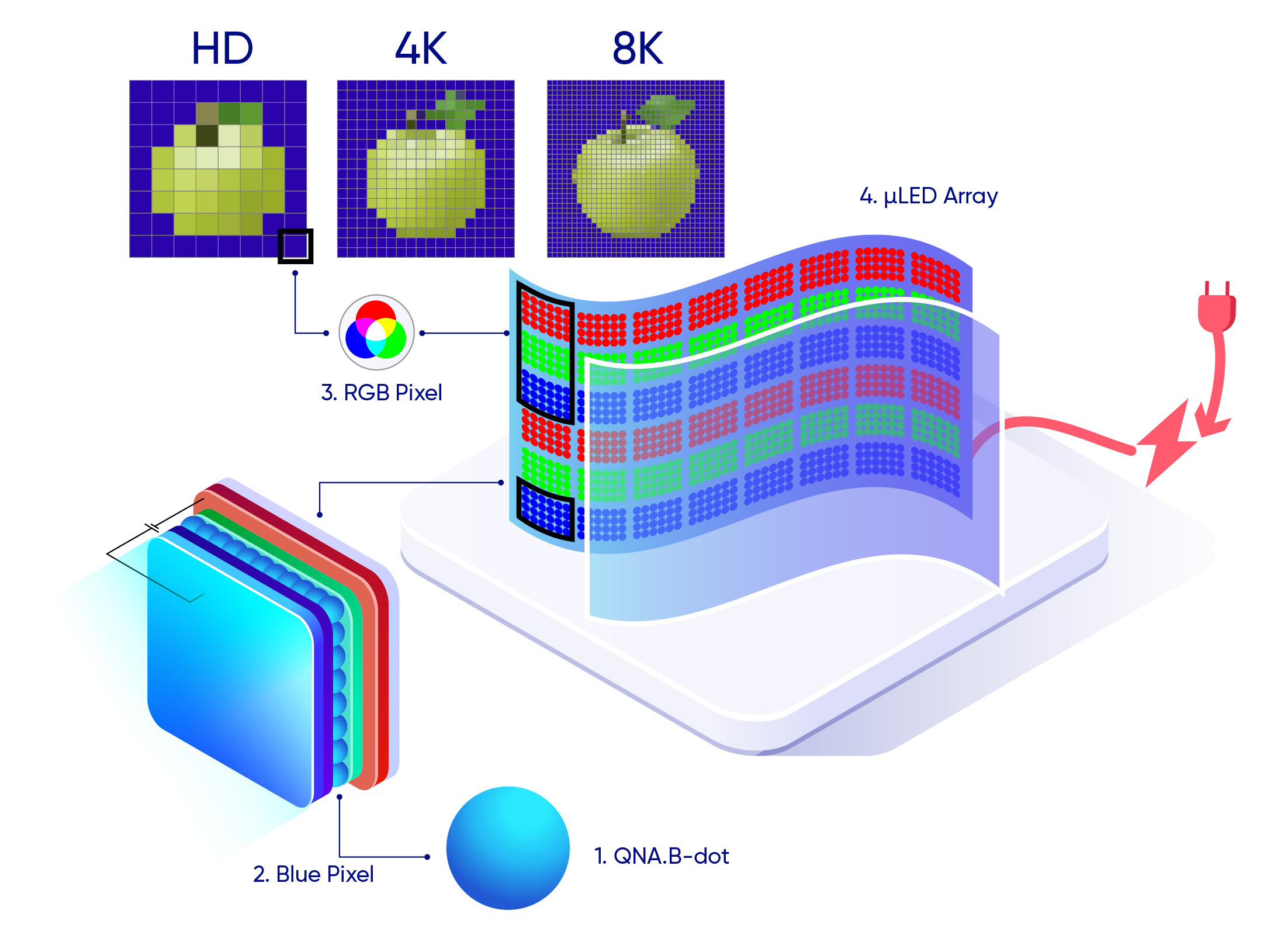QNA Technology Seeks Partners for Blue QD technology

Polish company ready for pilot tests with its Deep blue Quantum Dots for transparent and flexible LEDs
Polish nanotechnology company QNA Technology is developing Deep Blue Quantum Dots which it says have significant advantages over other quantum dots and organic light emitters. Their deep blue dots can be used in transparent and flexible LEDs, which may be cheaper than other emitters of high quality blue light.
The blue emitting quantum dots are one of the missing elements to create flexible LEDs, e.g. for medical application. QNA Deep Blue Quantum Dot has more benefits than any other known blue dot or organic emitter. This includes 450 dots, on which the big industry players focus. The 450 dots do not interact with human tissues as much, are less effective in initialising chemical reactions with many substances in dentistry, agriculture or pharmacy and enable reproducing a narrower palette of colours than QNA Dots do.
"Growing cadmium-free quantum dots with a high reproducibility, good stability is a very difficult task. Doing this for blue dots is even more challenging. We took that challenge as we knew that this material can be a game changer," said Artur Podhorodecki, CEO of QNA Technology. After two years of work, the scientists obtained dots emitting blue light with very high technical parameters (420-430 nm, FWHM < 20 nm, QY > 40 percent). They say they are not only developing a technology for large-scale production with the use of easily scalable flow technology but also a relevant know-how to modify the surface of the dots to make them suitable for a wide range of applications.
"We are currently looking for partners with whom we will create an LED based on the Deep Blue Quantum Dot. We are the only company in CEE offering this quality of blue QDs and ready for pilot tests and validation of our materials on the customer side. Fortunately, our operations are not affected by recent changes in the global supply chain. Our next steps will be launching a R&D project to extend the range of Blue QDs emission and finalizing the patent application."
QDs prove their usefulness in fast-growing markets such as biotech medicine, photovoltaics, security and anti-counterfeiting and LED-lighting markets, with combined revenues exceeding $10B in 2030. Markets where Deep Blue Quantum Dots can play a big role are growing at a rate of 24-30 percent per year.


































